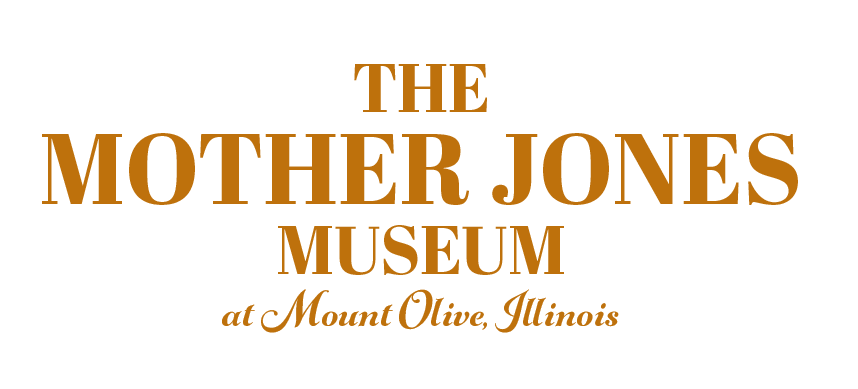International Women’s Day
Collinsville, IL Dress Factory 1926
The origins of
International Women’s Day,
the Triangle Shirtwaist Factory fire,
and Women’s history month.
International Women’s Day was first celebrated in Chicago in 1908 as a Socialist Party event that focused on economic and political equality for women workers. In 1909 the day was celebrated in NYC, and in 1910 in Denmark. On March 18th, 1911, the 40th anniversary of the Paris Commune, the day was celebrated in Paris.
It was the deadly Triangle Shirtwaist factory fire in Manhattan on March 25th, 1911, that brought the conditions in factories into American and world-wide consciousness. International Women’s Day programs around the world commemorate the victims of the fire with theater, poetry, lectures, and remembrances.
The first fire alarm sounded at 4:40 pm on Saturday, March 25th, 1911. The Triangle Shirtwaist Factory, which was located in the crowded Lower East Side of New York City, was on fire with the employees still inside. More alarms sounded, smoke quickly filled the factories and tenements where thousand of immigrants lived and worked, and drifted a few blocks west to fashionable Washington Square, where some of the city gentry lived in beautiful town houses.
The fire started in a fabric waste bin and spread quickly through the rooms crowded with sewing machines and fabric. The doors to the roof were locked. The one narrow fire escape could not carry the workers to safety. Fire companies put up their ladders, but none could reach the eighth and ninth floors where the workers struggled to escape. The streets filled with relatives, the press, horrified neighbors.
It was over in 30 minutes. 146 workers were dead, most were Italian or Eastern European Jewish immigrants. 143 were women and girls. The youngest, Kate Leone and Rosaria Maltese, were 14 years old. The owners were fined and ultimately paid the families of the workers a few dollars, but their insurance paid out more than their costs. The made money on the fire. The next year they were fined again for locking factory doors. Workers in sewing factories everywhere continued to toil 10 to 14 hours a day, six or seven days a week for $1.50 in pay, $34 in today’s dollars.
We remember this event from 1911 not because it was a rare happening, there were many fires, many accidents and deaths, but because it led to changes in labor laws, to public understanding of labor conditions, and to the world-wide celebration of International Women’s Day. It was called the fire that changed America.
Frances Perkins was having tea at the town house of a good friend on Washington Square North when the fire alarms sounded and smoke filled the neighborhood. She ran to the fire, watched the workers jump to their deaths as the fire and smoke consumed the factory. She was already involved in social justice programs and was appointed to the commission that studied the fire and wrote the recommendations that changed law and informed public policy. She later wrote that seeing the deaths of the factory workers led her to continue her work throughout her life. Frances Perkins became the first woman member of a presidential cabinet when she held the position as Secretary of Labor and worked to bring about social security, unemployment insurance, and the minimum wage. More than 20 years after the fire members of the Women’s Auxiliary of the Progressive Miners of America wrote to Frances Perkins to ask her help to have the government recognize the Progressive Miners of America.
Mother Jones was not in New York that day in 1911. She was in Mexico City, working for the United Mine Workers and the World Federation of Miners. She sought support from the Mexican government for mine workers in Arizona. Mother Jones knew the story of child labor, deadly working conditions and the lack of justice for workers and their families. She had already led the March of the Mill Children from Pennsylvania to the President’s summer home in 1903 in order to bring national attention to the plight of young, poor workers. In 1915 she was in NYC testifying before President Wilson’s Industrial Labor Commission and supporting the effort of the International Ladies Garment Workers Union.
President Jimmy Carter was the first president to proclaim March as Women’s History Month. In 1987 Congress passed legislation establishing the annual celebration of women’s history each March. In many settings women activists, artists and scientists are celebrated in programs throughout the month.
Resources:
David Brooks, How the First Woman in the US Cabinet Found Her Vocation, The Atlantic Magazine, April 14, 2015
Paola Corso, Once I Was Told the Air Was Not for Breathing, Parallel Press, Poetry Series, University of Wisconsin-Madison Libraries, 2012
Kirstin Downey, The Woman Behind the New Deal, Anchor Books, 2010
David Von Drehle, TRIANGLE, The Fire That Changed America, Grove Press, New York, 2003
Jonah Winter and Nancy Carpenter, Mother Jones and Her Army of Mill Children, Schwartz &Wade Books, New York, 2020.
Cornell Univ., cornell.edu, The 1911 Triangle Factory Fire
The Tenement Museum, tenement.org blog archive, The Legacy of the Triangle Shirtwaist Fire
womenshistorymonth.gov

